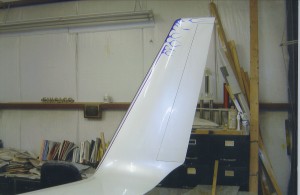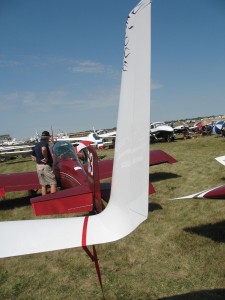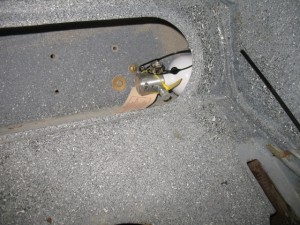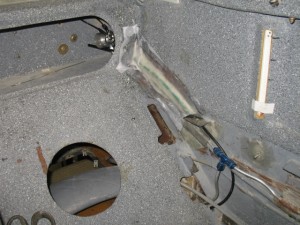Filter test
Most of today was spent researching, planning and ordering materials for the “blended winglet” modification I want to do on the wings. What is it? The blended winglet design was first introduced to the canard community by Jack Morrision on his E-Racer about 3 yrs ago. A beautiful plane which was later destroyed in a fire. Jack is working on a new plane which looks just as incredible! His a very innovative guy!
The blended winglet is the latest “craze” in the canard community. Once you see on on a plane, you’ll know why and will have to have on.

The interesting thing I found out from the ordering/research, is that if you were building new wings from scratch the blended winglet would only add about $50 or so to the cost of each new wing. It makes the wings look much sleeker, reduces drag, and provides a real and permanent speed improvement.

In a retrofit situation, the rebuild will cost around $250 or so (less epoxy) per wing. As I proceed into this phase of the project, I’ll refine the numbers for a more accurate cost of the mod.
I spent some time working on the fire suppression system. Had to scratch my head a few time on exactly how it was to be done. As usual, I give myself a seemingly impossible challenges for which in the most part can eventually be worked out. After an hour or so of fitting, I was able to solve the problems such as routing of the discharge line, activation cable, mounting, having access to the spar wing bolts, viewing the tank level, etc. The bottle will limit the storage capacity of the spar area, but if I need more baggage space for a trip, I can put on some of beautiful carbon graphite baggage pods P1 Cmposites is now building.

The cable is routed through a soda straw to allow it to be removed. I need to go the movies shortly as I find they have the best straws for glass work. I usually grab 3 or 4 at a time. The straws are really long and have a large diameter t0 guzzle down those super sized drinks you have to mortgage the house to buy (along with the popcorn).
After the plane work I tested out the next phase of my grease car project. The filter system I made out of some bag type filters I purchased at Duda Diesel. Buying this kind of filter (bag type) is much cheaper than buying cartridge type filters. For this test I have a 1 micron filter (size of bacteria) which is smaller than the 10 micron filter in the car. Worked great!
I am finding I hate the filter and pump stuff in the shop. The next step is to buy 2 plastic 50 gal drums ($20 ea) and install a underground pipe line from the front driveway to the back shed (the pipe is free) and move all the filter/storage crap to my shed. I’ll have to disassemble my cart, but I can reuse all the hardware.
Then I’ll just pump the dirty oil from the drum in the truck (via the pipeline) to the shed , filter it, store it, then pump the clean oil back to my driveway (via the same pipeline) and into the car. Clean, neat and out of sight when not needed. Sweet.
